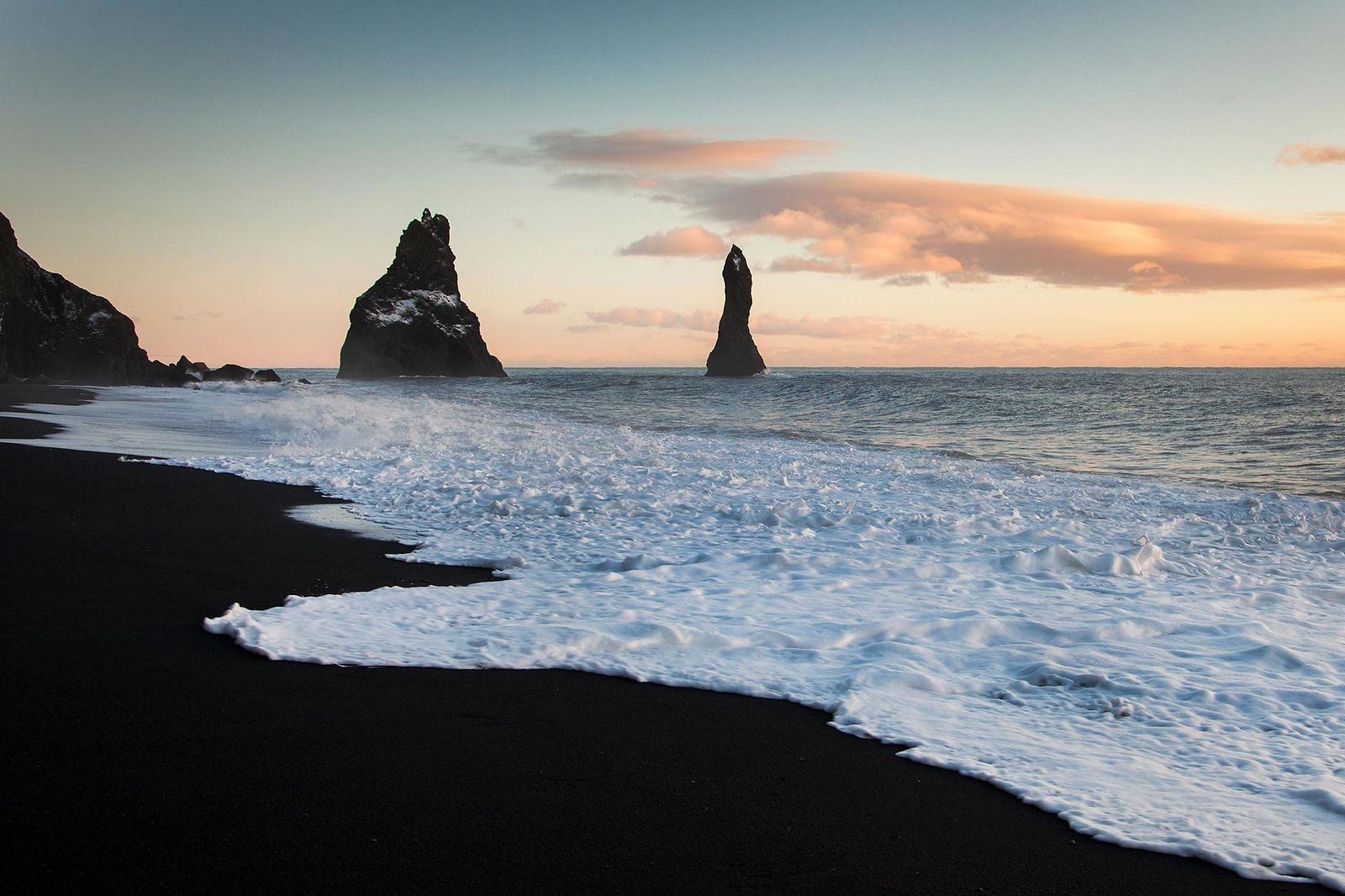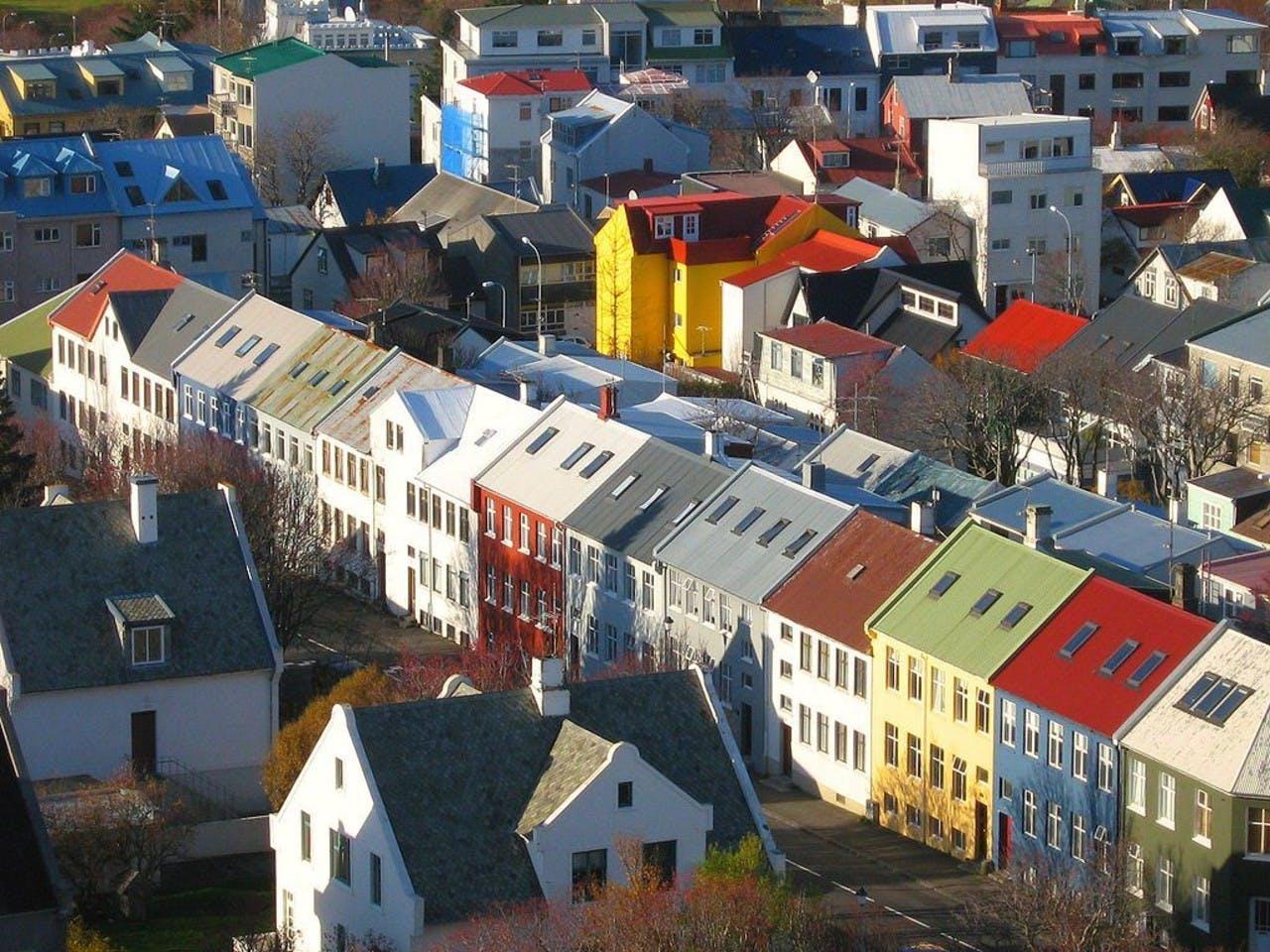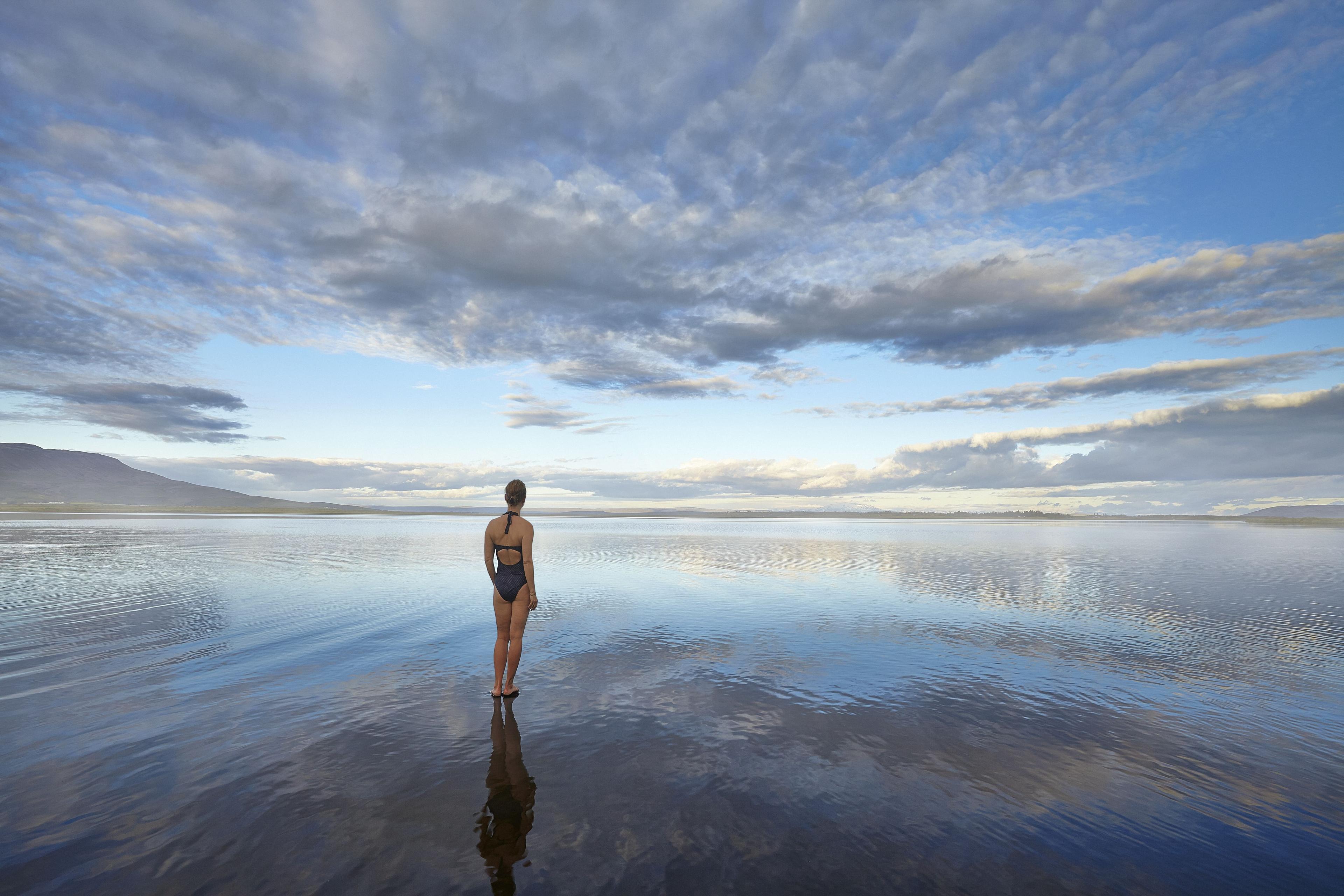The Best Time of Year to Visit Iceland - Your Guide
| All, Travel Guide, Ice Caves, DISCOVER ICELAND
Reynisfjara
So the decision has been made - you’re going to Iceland. You’re planning a trip of a lifetime whether it’s your first time or you're an Iceland junkie returning year on year. The question is: when is the best time to visit Iceland? The answer’s right here. Work out what you want to do, then find out from this ultimate guide when to do it. If you’re looking for the best adventures Iceland has to offer in the optimal month, look no further than Icelandic Mountain Guides, the adventure travel and tour expert in Iceland.
What is the best month to go to Iceland?
Most people think summer is the best time of year to visit Iceland because that’s when you’ll experience the warmest temperatures. It’s certainly good for hiking and sea-life cruises. But if you think you need warm weather to enjoy an outdoor spa, think again. There’s something heavenly about soaking in thermal waters in shimmering rain or snow.
Ultimately, it all depends on what you want to experience. It’s not easy to see the northern lights over the longest days of the summer when it barely gets dark. Snow activities are best experienced in winter. Trekking in autumn hues or the returning green of spring is lovely without the crowds. Here’s the lowdown.
What month is best to see the Northern Lights in Iceland?
The long, dark cloudless nights in winter give you the best opportunity for seeing the northern lights or aurora borealis. Seek out a clear, still winter night away from light pollution. March and September are often quoted as good months for solar activity. To find out more, head over to Icelandic Mountain Guides’ blog Is Winter the Best Time to Visit Iceland to See the Northern Lights?
So you want to make the best of your chances. Join a northern lights hunt with experts, who can quickly take you to the best locations. There’s nothing more magical than watching the dance and colour of the aurora on a snowy winter’s night. Even more magical is the four-day winter adventure tour of the Golden Circle with Mountain Guides Iceland, taking in
Thingvellir National Park, the magnificent waterfall of Gullfoss, the world famous Geysir hot spring, the black sand beaches and waterfalls of Seljalandsfoss and Skógafoss. Soak in a hot tub, snow-shoe and hike along a glacier. In the majestic landscapes of southwest Iceland, catching sight of the northern lights is an out-of-this-world experience. Short on time? Book the glacier walk and northern lights combo day trip.

Best time to go snowmobiling in Iceland
You may think winter is the only time to go snowmobiling in Iceland, but think again. Iceland’s many glaciers provide thrilling adventure year-round. Mýrdalsjökull, Vatnajökull and Langjökull are all good options. Even better, you can combine snowmobiling at Langjökull with a hike into the ice tunnels beneath the glacier. If you wish to combine a snowmobile trip on Mýrdalsjökull with an exploration of Katla ice-cave, the best time to visit is between October and March.
Icelandic Mountain Guides offer an unforgettable snowmobiling experience on Mýrdalsjökull. You’ll reach the glacier in a glacier truck (around two hours there and back), then hop onto your snowmobile to ride up to the ice cap with incredible views over south Iceland. The Mýrdalsjökull Tour is perfect for first-time snowmobilers under the expert eye of your guides.
Best time to visit Ice Caves in Iceland
Strictly speaking, ice caves and glacial caves are two different things. An ice cave is a natural cave with significant amounts of ice in it across the year. You can visit these caves year-round. Expect a kaleidoscope of colour: the blues and white hues of ice combined with the colours of the cave itself - blacks, reds, charcoal and copper.
Glacial caves are carved out by meltwaters that seep through crevasses from the surface of the glacier. Most tours to glacial caves operate from Vatnajökull. For safety reasons they are only accessible in winter between October and March when there’s less ice melt. Many tours, however, don’t commence until November. If you are in Iceland in winter, these dazzling ice palaces - glimmering in mesmerising shades of blue - shouldn’t be missed.
When all’s said and done, however, glacial caves are often referred to as ice caves. After all, they’re entirely created by ice!
Icelandic Mountain Guides offer electrifying day tours of ice caves. From Vik or Reykjavik, experience the Secret ice cave in Mýrdalsjökull. Up for a challenge? Equipped with harness, helmet, ice-axe and crampons, take the glacier bus from Skaftafell Base Camp to an outlet glacier of Vatnajökull. Getting into the cave can take up to two hours. For a spectacular show of colour, check out the Aurora Ice Cave near Jökulsárlón Glacier Lagoon. You’ll find more information on all the tours at Icelandic Mountain Guides Ice Cave Tours.
Best time to go on Glacier tours in Iceland
If you want to combine a glacier hike with exploration of an ice cave, winter is the time to visit Iceland. The glacier walks on their own, however, are available across the year. For an easy day trip from Reykjavik, join a tour to an outlet glacier of Mýrdalsjökull on the South Coast of Iceland, combining a 2.5-hour glacier walk with visits to two of Iceland’s most famous waterfalls.There are a range of glacier walks from Skaftafell and Sólheimajökull, lasting from 2.5 to 7 hours. Most tours run all year. FInd your own adventure at Icelandic Mountain Guides Glacier Walks and be prepared to be enchanted by otherworldly sculpted ice-scapes of deep crevasses and bewitching shades of blue. Read this article about the five best glacier tours in Iceland, and learn about why people love them so much!
And if you think that isn’t magical enough, how about combining a glacier walk with the northern lights?
Best time for hiking in Iceland
Ice-caps, glaciers, thermal streams and pools, rainbow-coloured ridges and snow-covered peaks as well as coastal paths, Iceland has some of the most exciting hiking on offer. The summer months are the best time for tackling Iceland’s fells and glaciers. Like a challenge? Head for Hvannadalshnúkur from Skaftafell, Iceland’s highest peak. Or try the four-day Þórsmörk Glacier Valley trek, the last part of the famous Laugavegur trail. Like otherworldly landscapes? Check out the fluorescent green ridge of Grænihryggur. These and other great hiking tours are offered by Icelandic Mountain guides.
Best time to tour the South Coast in Iceland
The best time to visit the coast is in the summer months when temperatures are at their kindest and you don’t have a brutally cold Atlantic off-shore wind to deal with. That doesn’t mean to say it won’t be breezy! The days are long and you can pack a lot in even if you’re pushed for time. Here are some of the south coast’s staggering locations you shouldn’t miss:
Black Sand Beach
Near Vik, Reyisfjara’s Black Sand Beach is a wild and beautiful place of heaving ocean, great chiselled columns of basalt and razor-ragged sea stacks. The basalt pebbles reflect the light like diamonds on the jet-black beach. You will be blown-away by this untamed corner of Iceland - literally and metaphorically.
Jökulsárlón Glacier Lagoon
The lagoon lies half an hour northeast of the fishing village of Hof. It’s more than worth the five hour drive from the capital. I think it’s safe to say, there are few places more beautiful in this world. To the north the glacier rises from the ice cap. To the south the narrow neck of this glacial lake flows into the Atlantic with its black diamond beach. The lagoon itself is a hypnotic blue, littered with ice-floats that are carved into strange and wonderful shapes.
Diamond Beach
From the lagoon the ice floats are pushed out into the Atlantic. Shored up on the black shingle of Diamond Beach like glassy whales, some are mottled and textured, others smooth and translucent. Out to sea, more ice floats are tossed along the surf. It’s a spell-binding section of Iceland’s south coast.
Sólheimasandur plane wreck
The US Navy DC plane crashed here way back in 1973. Astonishingly, the main body of the aircraft is still largely intact. Sitting on the expansive black sands of Sólheimasandur, the pale fuselage contrasting the dark barren landscape, looks like a film set. You too can feel as if you’re taking part in an adventure film. Join a tour from Reykjavik and head out from Arcanum base camp on a quad bike over the black sand beaches to the crash site. Even better, Icelandic Mountain Guides will throw in a visit to Skógafoss and Seljalandsfoss waterfalls on your return if you book a south coast tour with them.
For a different perspective of Sólheimasandur join a glacier kayak. Paddling among the ice floats in this wild mountainous terrain is an experience you’re unlikely to forget. As with the plane wreck tour, the package takes you along the south coast from Reykjavik and includes the waterfalls. Check out the South Coast Glacier Kayak Tour for more details.

Best time to go on Golden Circle tours in Iceland
You can’t go wrong with a tour of the Golden Circle during the longer days of spring, summer or fall. As one of Iceland’s most visited corners, consider the quieter spring months of April and May or September when autumn is already making an appearance. This three-day Golden Circle & Glacier Lagoon Tour with Icelandic Mountain Guides is the perfect starter trip for first-time visitors to Iceland. For a little bit of luxury at the end of a Golden Circle tour - taking in all the highlights- check out the Golden Circle & Fontana Wellness combo.

What’s the weather like in Iceland?
Winter
Iceland’s winter lasts from November through to March. Surprisingly, Iceland is not as cold as its name suggests as the severe temperatures Icelanders would otherwise experience at its high latitude are mitigated by the warm waters of the Gulf Stream. After the summer solstice, the days quickly grow shorter, and at the peak of winter you’ll only get around six hours of daylight. Don’t expect the entire country to be permanently snowbound. There’ll be a covering on the mountains, but the snow will come and go in low-lying areas. Temperatures hover around freezing - sometimes below, sometimes just above. Bring winter gear to stay warm. Winter is the Northern Lights season - and great for winter sports. It’s also a good time to enjoy one of Iceland’s many hot springs or the public pools which are geothermally heated and open all year. There are other upsides to visiting Iceland in winter: prices are lower and there are fewer people around.
Spring
Iceland’s spring begins at the start of April and carries on through to the end of May. The days are starting to lengthen, but the weather thrown at you can take in all four seasons - sometimes all in the same day! Average high temperatures will be around 50°F (just pushing 10°C). It’s chillier than summer, of course, but on the plus side, it’s a less expensive time to visit Iceland with cheaper airfares and accommodation. You may also be able to get deals on other travel related services such as car rentals and tours. If you rent a car, most of the country will be accessible apart from the Highland roads due to snow lying on higher ground. Bring lots of layers and waterproof shoes. When you travel into the countryside in the spring, you’ll feel - at times - like you have the whole country to yourself.
Summer
Summer in Iceland starts at the beginning of June and lasts through August. It is marked by long days, almost 24 hours at its peak. For most this takes some getting used to. Bring an eye mask if you need a dark sleeping environment. On the plus side, the long days of summer will give you lots of time to make the best of all the outdoor activities on offer in Iceland. Enjoy! During this time of year Iceland is very green - nuclear green! Every part of the country is now accessible as most of the snow has melted. This is when you’ll experience the warmest temperatures of the year, but don’t expect it to be hot or even warm. Summers are cool, marked by grey skies and rain.
Summer, unsurprisingly, is very busy and it’s the most expensive time to visit the country. It’s particularly crowded around the ‘honey pots’. If it’s your first visit to Iceland, think of going out of season. Alternatively, hire a four-wheel drive and head into the Highlands where there are plenty of empty spaces you can have all to yourself.
Autumn
Iceland’s fall - or autumn - lasts roughly from the beginning of September to the end of October. It arrives early and makes an appearance just for the briefest time. The days are starting to get shorter and temperatures are dropping. You can expect high temperatures in the high 40s (fahrenheit), maybe creeping into the 50s (celsius temperatures struggling to reach 10°). But, truth be told, you should expect just about anything when it comes to weather in Iceland at this time of year. As with spring, you can experience all four seasons in one day. The upside to Iceland’s fall is that it’s the beginning of the Northern lights season. In fact, September can be one of the best months. And, If you want to see autumn colours, early September is your best bet. By late October, the landscapes will look a little bleak, but still beautiful - this is Iceland after all! Find out how to make the best of each season - and the activities best suited to the time of year - by checking out our weather guide blog.
If you want to make the most of Iceland across all four seasons, Visit Iceland with Icelandic Mountain Guides for pure adventure.
Keep me informed about the Icelandic Mountain Guides Blog
Outdoor adventure in Iceland is our specialty. Subscribe to our free monthly newsletter to learn when to go, what to do and where to have the best adventures in Iceland.
Related Blog Posts

10 reasons to visit Iceland
2013-05-06
Tips for a safe hike in Iceland
2013-07-25
How to Capture the Northern Lights
2016-10-17
Weather Guide to Iceland in July - What to See & Do
2020-07-06
Iceland Weather in August - What to See & Do
2020-07-17
A Weather Guide to Iceland in December
2015-09-01
A Weather Guide to Iceland in November
2018-06-25
Related Tours

Golden Circle & Magical Nights

The Golden Circle & Fontana Wellness

Kayaking by the Glacier

South Coast & Glacier Kayak
